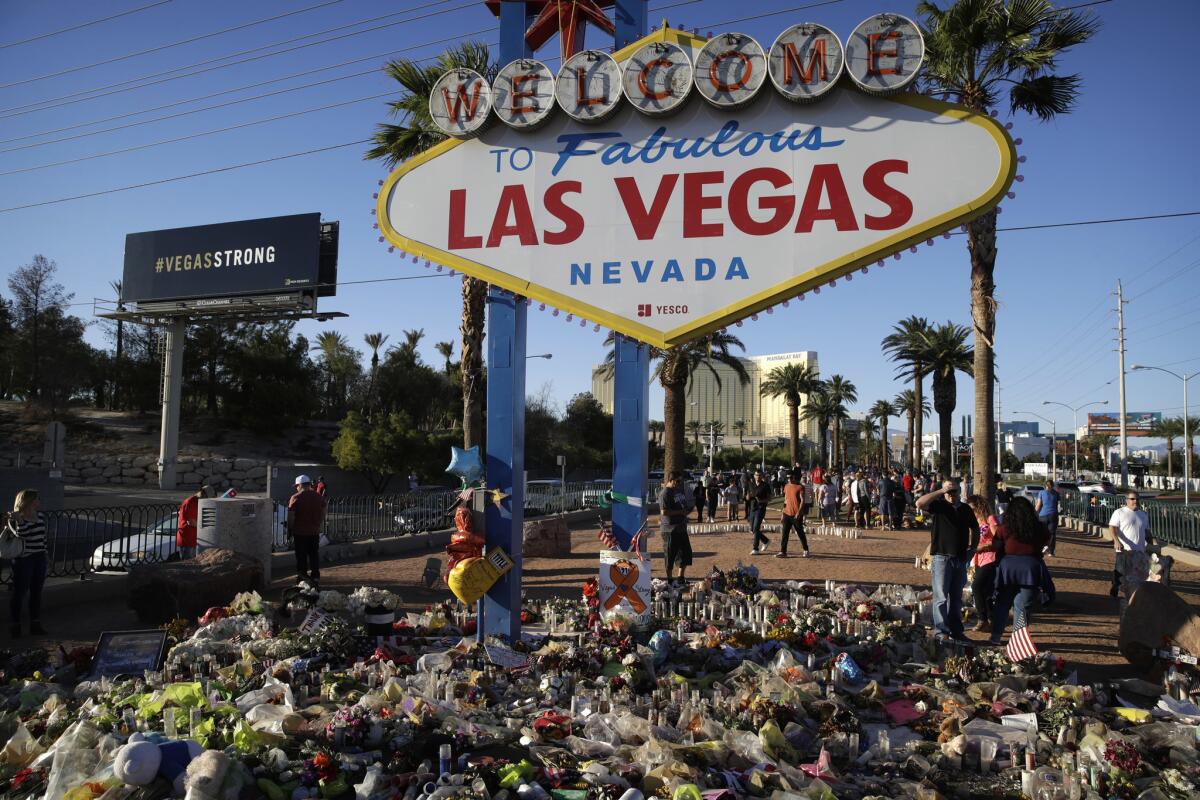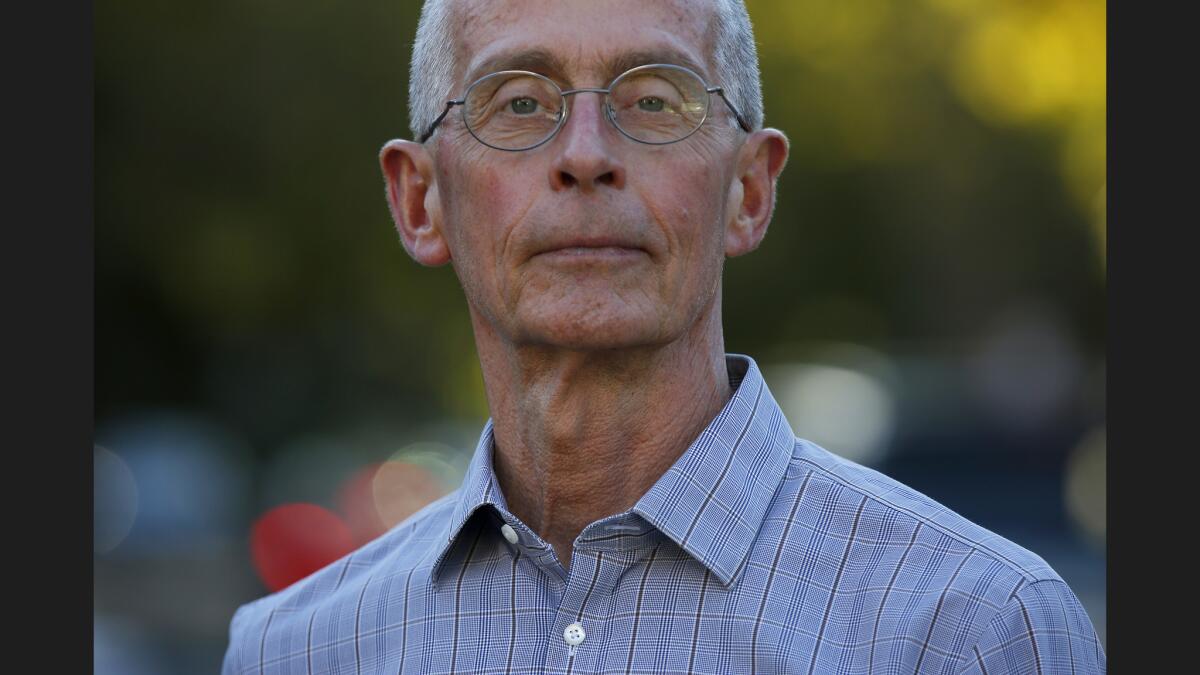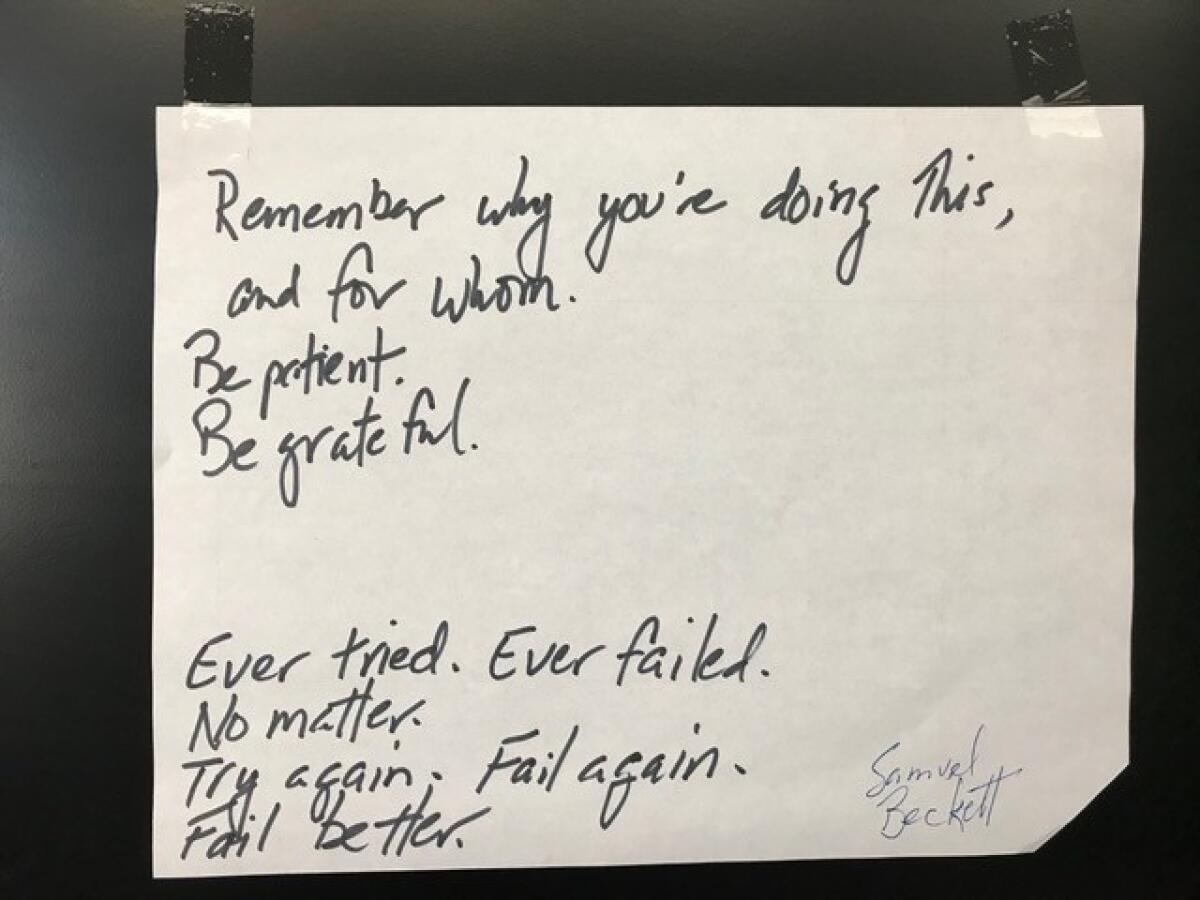Q&A: A UC Davis ER doctor searches for patterns to try to stop gun violence before it happens

Garen Wintemute, a UC Davis firearms violence expert and emergency room physician, is leading the nation’s first state-funded research center to understand who is at risk for gun violence and how to prevent it.
- Share via
The low-slung building in Sacramento is locked and unmarked for a reason. It’s the nerve center of the newly inaugurated University of California Firearm Violence Prevention Research Center. The center’s 15 UC Davis researchers, along with others from UCLA, UC Berkeley and UC Irvine, plan to use a five-year, $5-million state appropriation to conduct the most extensive examination ever of gun violence — who is at risk and how to prevent it. The state dollars help fill a void created when the federal government largely stopped funding gun violence research two decades ago.
Leading the effort is Garen Wintemute, 65, a UC Davis emergency room physician who has conducted gun violence research for more than 30 years. The wiry workaholic, a self-described crisis junkie, helped win passage of a state ban on cheap handguns known as Saturday night specials five years after his 1994 book, “Ring of Fire,” exposed the Southern California firearm manufacturers. Such work has led to threats — a gun maker once told him to make sure his life insurance was paid up — and a media-created moniker as “the most dangerous scientist in America” to the gun industry.
Since the mass shooting in Las Vegas on Oct. 1, Wintemute has been deluged with requests for interviews and articles, offers of aid and potential donations. He spoke with The Times in his sparsely furnished office, which features shelves of legal books, photographs of the cosmos and a handwritten note to himself: “Remember why you’re doing this, and for whom. Be patient. Be grateful.”
What can we learn from this latest mass shooting?
The weapon makes a difference. And, as is always the case, this one isn’t like any of the others. This is really important. The next one won’t be like this one. They’re all unique. What we need to do is figure out what are the threads in common and how can we address those commonalities so that we can prevent the next one. And the one that comes to mind is the weapon factor. It’s not that he used a semi-automatic weapon. It’s that he used a high-capacity magazine for the semi-automatic weapon. People say the weapon had no effect. Fine. Put that guy on a 32nd floor. Give him throwing knives. Give him a bow and arrow. The outcome is going to be different. The weapon does matter.
Did the Las Vegas gunman fit the profile of a mass shooter? Is there a profile?
If we get really specific, it falls apart. This guy was white. Shooters tend to be men. But he was a lot older than most of them. The problem is, if a profile is general enough to fit mass shooters, it fits millions of people. There are a whole lot of angry men out there. And the question is what makes this angry man do something that the other angry men don’t? And nobody has an answer.
Could anything have predicted his behavior?
No. Mass shooters have a tendency to acquire lots of weapons. What nobody’s ever tested is the hypothesis that they acquire more weapons than others do. Here in California we can actually do that. Given the data available in California, it’s possible that we can identify purchase patterns that are associated with an increased risk of future violence. We can look back at their purchase history and compare them to others. Is there anything about their purchasing pattern — the overall number of weapons, the frequency, the type of weapon purchased -- that would allow us with any degree of confidence to say that people with particular kinds of purchasing history appear to be as a group at high risk for doing something bad down the road?

But there are certain risk factors for gun violence?
Men are more at risk for being victims of homicide, for committing homicide, for committing suicide. For homicide, youth is a risk factor; African-American and Hispanic males are at higher risk than white non-Hispanics. Alcohol. Prior violence. Controlled substance abuse. One of the really pernicious myths is that interpersonal violence is a problem predominantly associated with mental illness. And that’s just not true. Only 4% to 5% of interpersonal violence is associated primarily with mental illness. Donald Trump has referred to the Las Vegas shooter as sick. Maybe. As demented. No evidence whatsoever. That’s a diagnosis. It is wrong on several levels to say that because he did what he did, he’s mentally ill. It further stigmatizes mental illness. It may simply be factually incorrect. We don't know.
In the last 10 years we have lost more civilians to firearm violence than we had combat fatalities in World War II.
— Garen Wintemute
So what is the preventive solution?
One of the commonalities is high-capacity magazines. In California almost 30 years ago, we banned sales of those magazines. Only last year, we banned possession. But they’re still out there. Maybe the next step is … something like an amnesty. Turn it in. No questions asked for a specific period of time. After that, if you've got one, you’re going to jail.
But it’s too narrow of a focus. If I had to put one thing at the top of the list it would be to expand the criteria for denial of a firearm purchase to include people who actively abuse alcohol. We’re doing research to confirm that those people are among those who legally purchase firearms and are at increased risk for committing crimes. The link between alcohol abuse and violence has been known for decades. This is the first study of gun owners.
Why is it easier to do gun research in California?
No other state collects the data California does. We also have a legislature that places a high value on scientific evidence when making policy. We take a more regulatory approach to firearms than most other states do.
California prohibits the purchase and possession of firearms by people who have been convicted of violent misdemeanor crimes such as assault and battery for 10 years, by people who have been hospitalized for mental health emergencies involving dangerousness to self or others for five years, and by people who are subject to temporary domestic violence restraining orders. We attempt to recover firearms from people who bought them legally but have since become prohibited persons, and we require a background check for all firearm purchases. We outlawed unsafe handguns such as Saturday night specials. We established a new gun violence restraining order, which allows a judge to intervene and order the recovery of firearms when an imminent hazard exists. Most recently, we banned the possession of high-capacity ammunition magazines, such as those used in Las Vegas.
It’s also true that we have below average firearm homicide rates and well below average firearm suicide rates. Whether our laws get credit for that or not I honestly don’t know, but that’s something else we’re going to look at.
What other research will you be doing?
We are gathering very basic data: What's the prevalence of firearm ownership in California? Why do people own guns, what kind of guns do they own, how do they buy them? … One of the things we very much want to do that nobody’s been able to do before is follow individual people through time … so we can determine the link between exposure to violence and the things that happen down the road.
Berkeley is looking at what community characteristics are associated with very high rates of firearm violence. UCLA will be working on intimate-partner violence. At UC Irvine, they’re going to be working in L.A. at the very small neighborhood level to figure out where is violence off the charts and what distinguishes the hot spots from the cold spots.

You’ve been called the most dangerous scientist in America to the gun industry. Are you?
Gosh, I don’t know. There are a few of us. Let’s be clear about what the danger is. Firearms are consumer products. The industry needs to move product. To the extent that they see the work that any of us do as threatening those economic interests, they see us as a threat. But 90% of the general population supports (background checks for all firearms purchases), 80% of gun owners support it and 70% of self-reported

Despite threats, you don’t back down. Why not?
It's a huge problem. I know as an ER doctor, most of the people who die from gunshot wounds die where they were shot. So for us as clinicians to make the largest inroads we can into the number of people who die, we have to prevent them from being shot in the first place. So that’s why. The questions are fascinating. The opportunity to make a difference for the better is fascinating. There are very very few people working on it. There's active opposition. What's not to like?
ALSO
'Guns kill people,' and leading doctors want to treat them like any other threat to public health
Ryan sides with NRA for regulatory fix on 'bump stocks,' not legislation, after Las Vegas shooting
Paddock had 17 rifles in room, including one modified with a legal rapid-fire device
Domestic violence homicide rate drops with stricter gun law, study finds
Sign up for Essential California
The most important California stories and recommendations in your inbox every morning.
You may occasionally receive promotional content from the Los Angeles Times.








